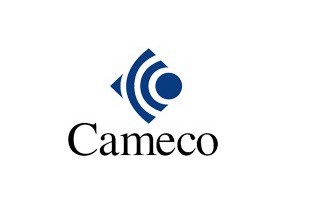Perhaps the most dominant trend in the mutual fund industry over the past several years has been the rise of passively managed, index-tracking mutual funds and exchange traded funds (ETFs), which have supplanted a large portion of actively managed assets under management.
According to the Investment Committee Institute (ICI) , actively managed domestic equity mutual funds experienced outflows every single year over the period from 2010 to 2017. More recently, outflows have gathered pace, totaling $844 million over 2015–2017.
Meanwhile, ICI data shows indexed domestic equity mutual funds and ETFs have experienced consistent inflows over the same period. Morningstar, while providing slightly different figures, tells the same story.


Another trend has been the growth of socially responsible investment under a variety of labels, including sustainable investing, socially responsible investing (SRI), impact investing, and, most broadly, environment, social, and governance (ESG) investing.
Similar to passive funds and ETFs, ESG assets under management in mutual funds have grown rapidly, rising from $118 billion in 2001 to $1.7 trillion in 2016.1 Given these numbers, it’s no surprise that the passive crowd wants into the ESG space, using systematic indexing techniques to replicate ESG screening strategies.
Recently, a major index fund provider filed with the Securities and Exchange Commission to create a US stock ETF and an international stock ETF that will screen for ESG factors. According to the firm’s website, the funds will use “exclusionary” (negative) screening as well as “inclusionary” (positive) screening to select companies that rank highly on ESG criteria.
SOPHISTICATED ESG INVESTING HAS MOVED
BEYOND NEGATIVE SCREENING AS THE PRIMARY
DRIVER OF PORTFOLIO CONSTRUCTION
Negative screening is straightforward. Companies that produce/distribute alcohol, tobacco, fossil fuels, weapons, etc. are eliminated from consideration. Sophisticated ESG investing, however, has moved beyond negative screens as the primary driver of portfolio construction.
Today’s ESG investor seeks to identify companies that are setting the standard in environmental, social, and governance policies and practices, or companies that have committed to moving toward best practices with specific, measurable signposts to gauge progress.
The firm mentioned above does reference “inclusionary” screening, and index providers have already designed quantitative systems that aggregate ESG data, rank companies according to their scores, and select the top tier. Even so, these quantitative ranking systems retain “black box” elements, making it difficult for investors to truly understand what they’re getting.
As an example, let’s examine the scores provided by a selection of ESG rating organizations for a handful of companies. In the table below, we show the ESG scores provided by Saturna Capital, Thomson Reuters Eikon, RobecoSAM, and Sustainalytics for Estée Lauder, Unilever, Pfizer, L’Oréal, Nestlé, Nike, GlaxoSmithKline, and Adidas. We have chosen this list of companies for three reasons:
- They demonstrate how dramatically ratings agencies can differ about one company, while being in full agreement on another;
- They show how ostensibly similar companies can have very different ratings;
- They provide some surprising and unintuitive results.
ESG Scores Can Vary Widely Among Rating Organizations: Sample ESG Percentile RankingsCompanySaturnaEikonRobecoSAMSustainalyticsDispersionEstée Lauder81.1378.2733.0021.7430.58Unilever88.4682.53100.0043.4824.52Pfizer92.2481.3541.0082.5022.71L'Oréal77.4980.7653.0082.6113.81Nestlé74.6873.96100.0096.1513.81Nike63.7967.8176.0057.697.68GlaxoSmithKline87.0288.5898.0095.005.21Adidas87.3988.1197.0092.314.43ESG scores shown above are standardized as percentile rankings. Saturna Capital’s ESG scores were calculated as of June 30, 2018. ESG rankings from other sources reflect scores they made available as of June 30, 2018. Availability of data used to calculate these scores varies by company reporting schedules, and may be reported on annual cycles or even less frequently. Dispersion is the standard deviation among the four sets of rankings; higher dispersion indicates greater disagreement among ranking systems.
The first thing we notice is that for companies such as Estée Lauder, Unilever, and Pfizer there are significant differences of opinion among rating organizations, as indicated by the high dispersion. Looking at Estée Lauder, we might think RobecoSAM and Sustainalytics are simply tougher graders, but, moving down to L’Oréal, Sustainalytics provides the highest score among the agencies. For Unilever, RobecoSAM assigns a perfect 100. Meanwhile, for Adidas, GlaxoSmithKline, and Nestlé, RobecoSAM and Sustainalytics assign the highest scores. The “tough graders” theory does not hold.
Similarly, we see that rating agencies can be in total agreement on one company – everyone likes Adidas and Glaxo – while holding strongly divergent views on others. We also see variations between companies in the same business. What differentiates L’Oréal from Estée Lauder, or Nike from Adidas? More to the point, how is an investor to make sense of this?
WHAT CONSTITUTES APPROPRIATE
BOARD DIVERSITY AND INDEPENDENCE?
ARE DIRECTORS QUALIFIED?
In order to answer that question, we disaggregated the ESG scores, separating them into their environmental, social, and governance components. The primary observation is that dispersion varies by category. The lowest dispersion was recorded among the environmental scores, meaning there was a lower variation among scores in this category. We found higher dispersion among the social scores, while governance scores exhibited the greatest dispersion. This is intuitively attractive given that environmental metrics, such as energy and water usage, carbon emissions, and waste management, are relatively easy to measure and score: consensus exists as to what constitutes good environmental stewardship. The same can be said of social metrics, such as worker safety, human rights, community support, and product responsibility.
When it comes to governance, however, a greater degree of subjectivity enters the picture. Of course, one can measure various governance metrics, but interpretation may vary. What constitutes appropriate board diversity and independence? Are the directors qualified and possessed of experience relevant to the firm? Is executive compensation reasonable and based on meaningful key performance indictors (KPIs)? Is management shareholder-friendly? How has management responded to challenges in the past? To illustrate the last point, let’s examine two recent corporate controversies that have affected Starbucks and Nike.
In May, a Philadelphia-area Starbucks manager called the police in response to two black men entering the café and apparently waiting for their business contact to arrive before ordering. This incident was splashed across the headlines, threatening to create a narrative about endemic intolerance and racism at Starbucks. However, Starbucks quickly and proactively responded to this threat with actions that included dismissal of the responsible store manager, a personal apology by the CEO to the affected individuals, and closure of all of its stores across the country to conduct employee training in an effort to prevent such incidents from occurring in the future. The company also changed certain rules governing store management. Starbucks’ response was quick, decisive, and holistic, and reflected well on the seriousness with which management viewed the event.
Contrast Starbucks’ open and proactive response to that of Nike following the announced departures of several senior executives amid rumors of sexual harassment. For weeks, Nike said nothing beyond boilerplate statements regarding the departures. Eventually, the CEO addressed the entire company, and a transcript of the address was released. Still, Nike’s CEO dealt only in generalities and did not specify remedial steps. Arguably, he generated more confusion than clarity, even though the events that led to the address involved several persons at the highest levels of Nike’s executive team. Nike’s response was slow and vague and gave the impression management was more interested in wishing the problem away rather than facing it head on.
Returning to our question of how to make sense of wide-ranging ESG scores, the inescapable answer is that mechanical scoring processes leave considerable latitude for subjectivity and interpretation. This is demonstrated clearly by the correlation charts below, which plot relationships between pairs of ESG rankings for 444 companies. We plotted scores from the ranking organizations Saturna Capital, Thomson Reuters Eikon, RobecoSAM, and Sustainalytics against each other, overlaid by a line that shows the linear fit between the two sets of scores. The ranking organization named above a given chart is plotted on the horizontal axis, while the ranking organization named to the right of the chart is plotted on the vertical axis. R2 represents the percentage of the variation between the pair of rankings that is explained by the linear fit. The lower the R2, the lower the agreement between the ranking agencies and, as we can see, agreement is not high. We believe a truly value-added determination requires active management and qualitative, rather than quantitative, analysis. No scoring system will be able to determine that the board is made up of the CEO’s golfing buddies.
ESG Scores Can Vary Widely Among Ranking Organizations:
Correlation Plots of Pairs of ESG Rankings for 444 Companies
Saturna
 Thomson Reuters Eikon
Thomson Reuters Eikon

 RobecoSAM
RobecoSAM


 Sustainalytics
Sustainalytics
RESEARCH HAS SHOWN GOVERNANCE
TO BE THE MOST SIGNIFICANT METRIC
WITH REGARD TO INVESTMENT RISKS
While ESG investing evolved from earlier forays into social investing, it gained momentum as a response to corporate degradation of the environment, oppressive treatment of labor, and malfeasance in the C-suite. These traits were not widespread but certainly common enough to garner attention. Over time, research has shown governance to be the most significant metric with regard to investment risk reduction. Intuitively, this makes sense, just as it makes sense that companies with the best governance are likely to be the ones treating their employees most fairly, contributing to their communities, and working to minimize their environmental impact. In short, good governance often signals hitting the ESG trifecta, while an effective determination of good governance requires more than a quantitative model. The irony is that the greatest dispersion of ESG scores, reflecting higher subjectivity and the lowest transparency for investors, occurs within the segment most clearly connected to reduced risk — a company’s management and governance. A passive approach to ESG investing therefore exposes investors to risk from subjectivity and bias inherent in quantitative scoring systems, as well as the inability to distinguish the trivial from the critical, or the proactive from the reactive. In their quest to find top-tier firms that seek to reduce risk through industry best practices, ESG investors should demand more.
![]()
Footnote
1 US SIF Report on US Sustainable, Responsible and Impact Investing Trends, 11th Edition, The Forum for Sustainable and Responsible Investment, 2016, page 36.
Important Disclaimers and Disclosures
This material is for general information only and is not a research report or commentary on any investment products offered by Saturna Capital. This material should not be construed as an offer to sell or the solicitation of an offer to buy any security in any jurisdiction where such an offer or solicitation would be illegal. To the extent that it includes references to securities, those references do not constitute a recommendation to buy, sell or hold such security, and the information may not be current. Accounts managed by Saturna Capital may or may not hold the securities discussed in this material.
We do not provide tax, accounting, or legal advice to our clients, and all investors are advised to consult with their tax, accounting, or legal advisers regarding any potential investment. Investors should not assume that investments in the securities and/or sectors described were or will be profitable. This document is prepared based on information Saturna Capital deems reliable; however, Saturna Capital does not warrant the accuracy or completeness of the information. Investors should consult with a financial adviser prior to making an investment decision. The views and information discussed in this commentary are at a specific point in time, are subject to change, and may not reflect the views of the firm as a whole.
All material presented in this publication, unless specifically indicated otherwise, is under copyright to Saturna. No part of this publication may be altered in any way, copied, or distributed without the prior express written permission of Saturna.;















